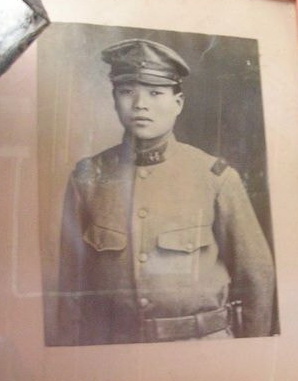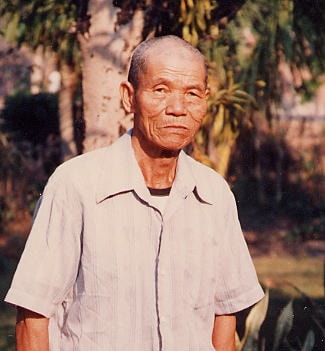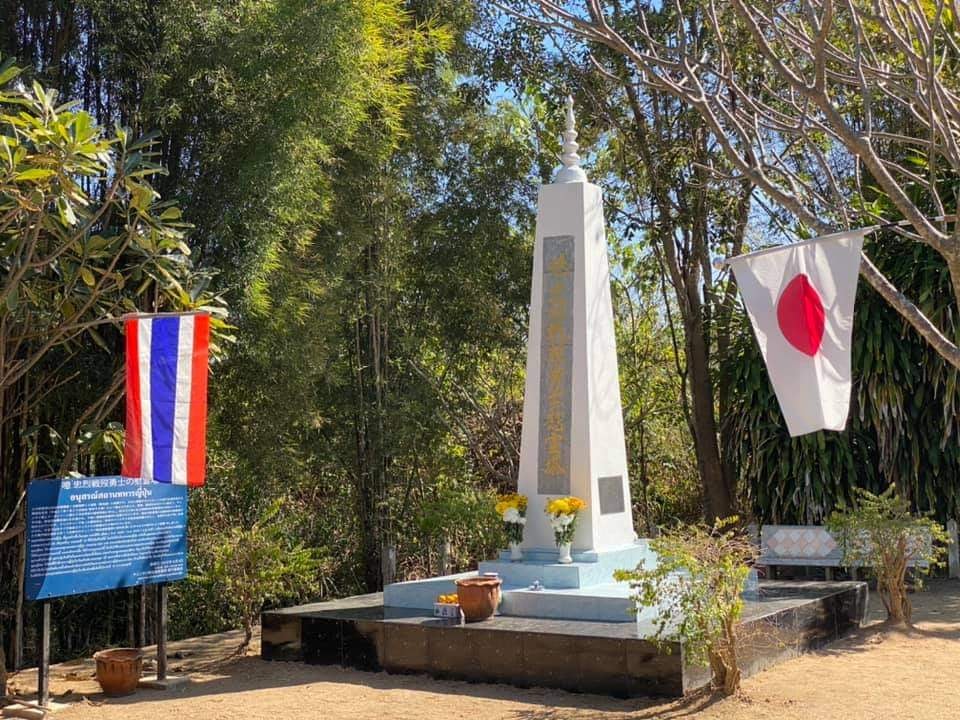Khun Kham Nippon whose real name is Matsukichi Fujita 藤田松吉 was a Japanese soldiers who refused to return to the country after World War II ended.
He was born in Nagasaki. At the age of 19, he enlisted in the second Sergei-Japan War in Guangdong province under the 18th Brigade, 55th Infantry Regiment. At the end of 1941, he participated in the Battle of Malaya, where Japanese soldiers landed in southern Thailand to take over the Malaya Peninsula and Singapore. His unit landed in Gotabaru, Glanton State, Malaya. On 8 February 1942, they crossed the Johor Strait to Singapore and took over Tengah Airport. On Feb 15, 1942 Singapore fell.
In April 1942, more than 5,000 soldiers under the 18th Brigade were sent to Burma to fight in Pyinmana and Mandalay. In August 1942, they marched to attack the Hukawng Valley in northern Burma to cut off the supply and maintenance routes from India to southern China via the Burma Road (one of the reasons Japan invaded Burma was to try to seal off western-forces into China, where China and Japan had been at war since 1937).
In October 1943, the Chinese Nationalists and the United States forces were able to successfully march across the Chinese border into northern Burma. By December 1943, the 55th Infantry Regiment was sent to assist the 56th Brigade in blocking the Ledo route used by Western nations to transport tactical factors from India to China.
July 8, 1944: Japan losses the Battle of Imphal, a major defeat for the Japanese military in the China-Burma Theater. The 55th Infantry Regiment fought in the Battle of Mitchina, where Fujita was injured in his left calf. The first group of Japanese soldiers retreated to Thailand through the route on what became known as the White Bone Path. In those first military units, there were some fit soldiers, others were wounded or suffering from illnesses. A small number died during that retreat. Sometimes, if there’s no time to handle the bodies, they were be dumped by the side of the road. For days, the corpses were left rotting, the wild animals gnawing and their skeletons scattered along the retreat route. Troops who followed observed the white skeletal fragments scattered along the path, hence the name White Bone Path.
Fujita was one of the wounded soldiers who traveled this route. He saw several fellow soldiers who died along the way. There was famine, terrific hardship and death. His leg injury made the journey difficult and slow, but he stayed with his fellow soldiers in the 55th Infantry Regiment at Khata Train Station to come to Yangon.
There he was separated from his unit. He decided to travel alone down south, heading to Thailand through the wilderness of the forest, eventually successfully crossing the Salawin River on August 15, 1945, the same day that the Japanese army surrendered the war.
When Fujita was at the border, his unit was located at the mouth of the Saton River (300 kilometers away). After reaching the border, Fujita spent six months walking from the Thai-Burmese border to the Japanese Army Field Hospital in Don Kaew, Chiang Mai most of that time during the rainy season. After his wound was healed, he was placed in charge of the work of transporting food to the Japanese barracks at Khun Yuam.
When Japanese soldiers were repatriated from 1946 to 1947, he refused to return and hid in Mae Hong Son Province. He later lived in Chiang Mai and eventually gained Thai citizenship and became known as Uncle Kham Nipon. In 1965, the Maeda Construction Companty from Japan worked to construct Highway No. 11 from Chiang Mai to Lampang. They also built the Lam Dom Noi Dam in Ubon Ratchathani. Because he could communicate in both Japanese and Thai, Khun Kham was hired as a construction supervisor.
In 1971, Khun Kham Japan decided to return to Nagasaki. He knew that his parents had died in the wake of the nuclear bombing of Nagasaki on August 9, 1945. But upon returning home, what surprised Khun Kham was seeing his own grave sign stating that he himself had died on December 23, 1944 from malaria and wounds to his right arm at the field hospital of the 18th Brigade in Burma.
After not returning home for 30 years, Khun Kham was disappointed with post-war Japanese society. He felt that Japanese society had changed a lot, becoming a society that was very frantic about materialism. After only four days in Japan, Khun Kham decided to return to Thailand. He never considered stepping back on his native land.
Back in Thailand, he assisted Japanese officers who came to investigate and collect the bones of Japanese soldiers who died during World War II. He moved from Chiang Mai to Lamphun, living with his Thai wife and stepdaughter.
It was during the collection of the ashes of fellow Japanese soldiers who died in Thailand that the construction of a Japanese military memorial was conceived. Even 10 years of war, Khun Kham had dreamed of seeing the spirits of several fellow Japanese soldiers tell them where they were burial or the area where they died, and those spirits also told him to find and help collect their ashes. Khun Kham began to go to different places following those dreams that those souls came to tell them, and when the ashes were found, they would be brought to his home. He built a rectangular pillar not far from his home as memorial to these Japanese soldiers. The lettering 噫忠烈戦歿勇士之慰霊塔 means “A Memorial for the Dead”. Every August 15th, it was his day to provide sake and lay flowers at this memorial to pay homage to the spirits of his fellow soldiers. It is in remembrance of the day that Japan surrendered in World War II.
Khun Kham (Matsukishi Fujita) died on January 25, 2009, at the age of 90. His body may be gone, but his memorial remains in Nakhon Chedi Lamphun, Pa Sang District, Lamphun Province as a reminder of the story of Japanese soldiers who had to cross the sea to fight in Southeast Asian territory. https://maps.app.goo.gl/wXyBx6Ta33MLKqu57
This article is partly based on the work of Sebastian Phua, who conducted a search and study of Japanese soldiers in Southeast Asia.



